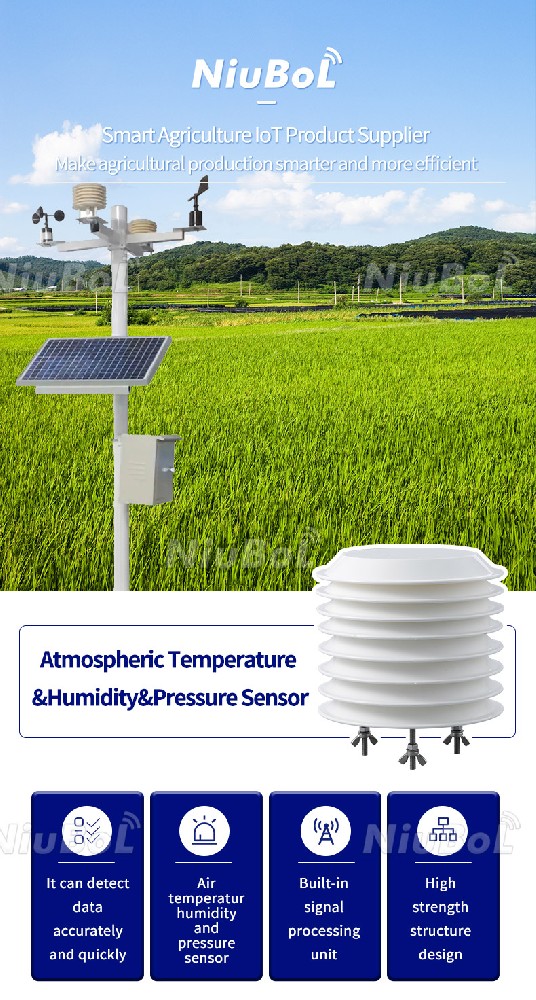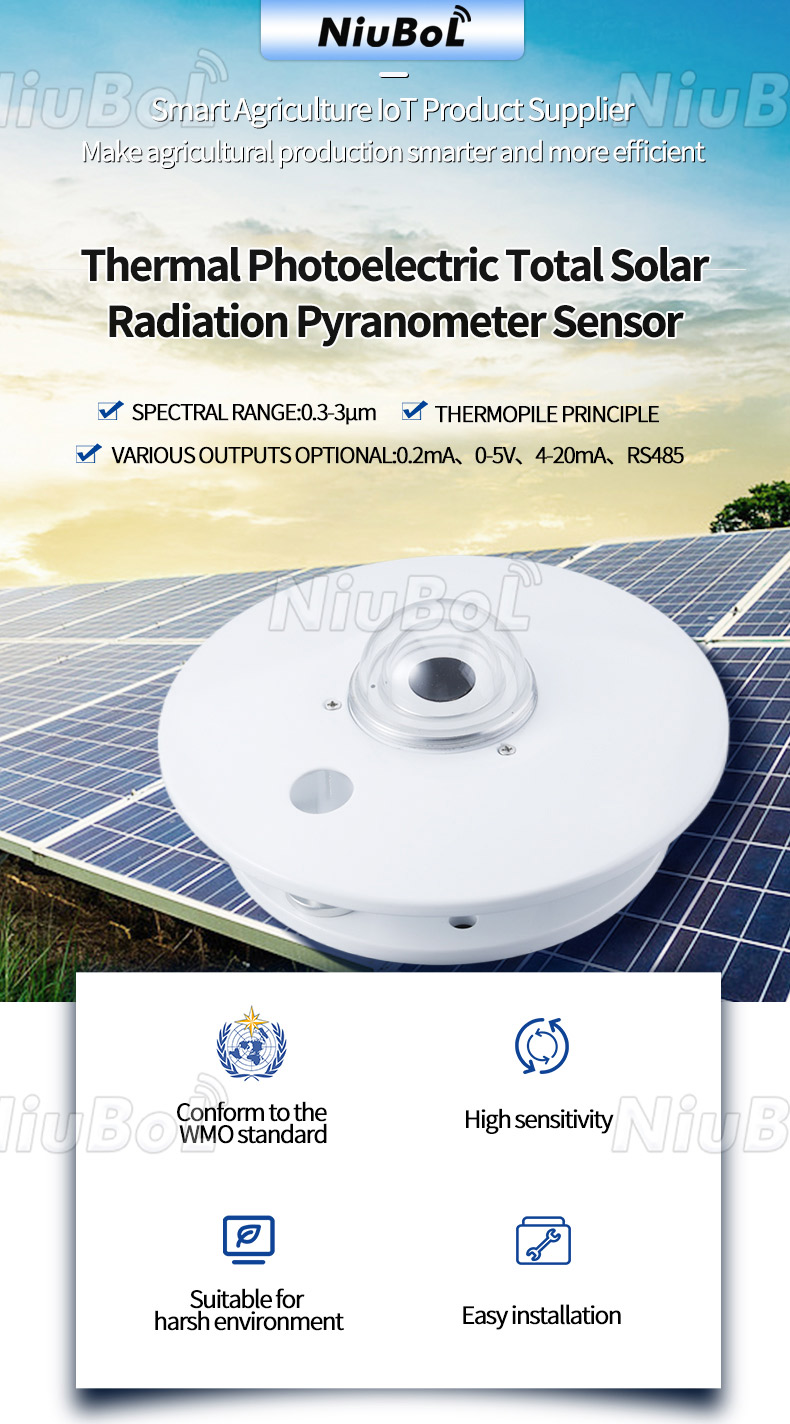

— Blogs —
—Products—
 Consumer hotline +8618073152920
Consumer hotline +8618073152920 WhatsApp:+8615367865107
Address:Room 102, District D, Houhu Industrial Park, Yuelu District, Changsha City, Hunan Province, China
Product knowledge
Time:2022-07-05 20:49:28 Popularity:644
With the continuous advancement of meteorological technology, a variety of sensors have been developed for different fields such as agriculture, industry, forestry, and scientific research. These sensors are essential for collecting data on various weather and environmental factors, allowing for better decision-making and efficient operations. In the field of meteorological observation, weather sensors play a critical role in monitoring various parameters such as air temperature, humidity, atmospheric pressure, soil conditions, and radiation levels. Let’s take a closer look at the different types of weather sensors commonly used in meteorological observation:

These sensors are designed to measure the air temperature and the relative humidity of the surrounding environment. They typically consist of a humidity-sensitive element (often a polymer or metal oxide) and a thermal element (such as a thermistor or thermocouple) to measure temperature. The sensor converts these measurements into current or voltage signals that can be used for further analysis. Air temperature and humidity sensors are commonly used in industries such as food processing, tobacco production, greenhouse management, and animal or plant breeding.

Rainfall sensors measure the amount of precipitation over a specific period, providing valuable data on rainfall intensity, duration, and frequency. These sensors help in tracking the start and end time of precipitation events. The most common types of rainfall sensors include:
- Tipping Bucket Rain Gauge: It collects rainfall in small amounts in a bucket that tips over when a certain amount is accumulated. Each time the bucket tips, a signal is sent to record the precipitation.
- Piezoelectric Rain Sensor: This type uses the piezoelectric effect to detect rainfall by measuring the mechanical deformation caused by raindrops hitting the sensor surface.
These sensors are widely used in agriculture, hydrology, traffic management, and forestry for applications such as irrigation management, flood prediction, and environmental monitoring.

Solar radiation sensors, such as the RS-RA Photoelectric Total Solar Radiation Sensor, measure the intensity of solar radiation that reaches the Earth's surface. This is crucial for fields such as solar energy generation, agricultural planning, and meteorological studies. Solar radiation data is used in determining the amount of solar energy available for photovoltaic systems, studying the effects of solar radiation on buildings and materials, and assessing agricultural conditions. These sensors are also important in the evaluation of air pollution and climate studies.
These sensors are designed to measure soil temperature and moisture content, which are vital for agricultural applications. Soil moisture sensors help in determining the moisture levels in the soil, ensuring optimal irrigation. Soil temperature is another critical parameter for plant growth and development. These sensors can help farmers make informed decisions about irrigation scheduling, crop planting times, and overall soil health management.
Snowfall sensors monitor the amount of snow that accumulates during a snowstorm. These sensors can measure the snow depth and detect the snow's weight or density. Some snowfall sensors are integrated with radar or ultrasonic technology to continuously monitor snowfall without the need for direct contact. These sensors are crucial for weather monitoring, especially in regions where snow accumulation is a concern for transportation, infrastructure, and agriculture.
Atmospheric pressure sensors, also known as barometers, measure the pressure exerted by the Earth's atmosphere. Pressure sensors are important for weather forecasting, as changes in atmospheric pressure often indicate changes in weather conditions such as approaching storms or clear skies. These sensors are used in meteorological stations, aviation, and environmental monitoring to predict weather changes and study atmospheric phenomena.
Noise sensors measure the level of sound or noise in a given environment. While they are not typically considered part of traditional weather monitoring systems, they are increasingly used in smart cities and environmental studies. Noise pollution data can be important for assessing the impact of human activities on the environment, urban planning, and public health. Noise sensors are used in areas where sound levels can indicate changes in the surrounding environment, such as construction sites or traffic monitoring.
Soil pH sensors measure the acidity or alkalinity of the soil, which is essential for understanding soil health and its suitability for different crops. The pH level of the soil affects the availability of nutrients to plants and influences their growth. These sensors are widely used in agriculture and horticulture to assess soil conditions and optimize fertilization and irrigation practices.
Soil nutrient sensors measure the levels of essential nutrients like nitrogen, phosphorus, and potassium in the soil. These nutrients are critical for plant growth, and their levels must be monitored to ensure optimal agricultural productivity. Soil nutrient sensors help farmers manage fertilizers more effectively, reduce environmental pollution, and increase crop yields by ensuring that plants receive the right nutrients in the correct amounts.
Wind speed and direction sensors, such as anemometers and wind vanes, measure the velocity and direction of the wind. These sensors are important in various applications such as weather forecasting, aviation, marine operations, and agriculture. Monitoring wind patterns is essential for understanding weather systems and their impacts on crops, especially for plants that are sensitive to wind stress.
UV radiation sensors measure the intensity of ultraviolet (UV) radiation from the sun. High levels of UV radiation can be harmful to both human health and crops. UV sensors help in monitoring environmental conditions, particularly in regions where UV exposure is a concern for public health and agriculture. These sensors are also used to evaluate the impact of UV radiation on materials like plastics, fabrics, and coatings.
Soil compaction sensors are used to measure the degree of soil compaction, which can affect root growth and water infiltration. These sensors are commonly used in agriculture to assess the impact of machinery, tillage practices, and other factors on soil structure. Managing soil compaction is crucial for maintaining soil health and optimizing crop production.
Conclusion
The development of weather sensors has greatly enhanced our ability to monitor and understand the environment. These sensors play a crucial role in meteorology, agriculture, industrial applications, and environmental monitoring. By providing accurate and real-time data on various environmental factors, weather sensors help optimize resource management, improve crop yields, and contribute to the sustainable use of natural resources. As technology continues to advance, we can expect even more sophisticated and accurate sensors that provide deeper insights into weather patterns and environmental conditions.
Prev:How much is soil temperature sensor?
Next:What are the items observed by the meteorological observatory?
Related recommendations
Sensors & Weather Stations Catalog
Agriculture Sensors and Weather Stations Catalog-NiuBoL.pdf
Weather Stations Catalog-NiuBoL.pdf
Related products
 Combined air temperature and relative humidity sensor
Combined air temperature and relative humidity sensor Soil Moisture Temperature sensor for irrigation
Soil Moisture Temperature sensor for irrigation Soil pH sensor RS485 soil Testing instrument soil ph meter for agriculture
Soil pH sensor RS485 soil Testing instrument soil ph meter for agriculture Wind Speed sensor Output Modbus/RS485/Analog/0-5V/4-20mA
Wind Speed sensor Output Modbus/RS485/Analog/0-5V/4-20mA Tipping bucket rain gauge for weather monitoring auto rainfall sensor RS485/Outdoor/stainless steel
Tipping bucket rain gauge for weather monitoring auto rainfall sensor RS485/Outdoor/stainless steel Pyranometer Solar Radiation Sensor 4-20mA/RS485
Pyranometer Solar Radiation Sensor 4-20mA/RS485
Screenshot, WhatsApp to identify the QR code
WhatsApp number:+8615367865107
(Click on WhatsApp to copy and add friends)